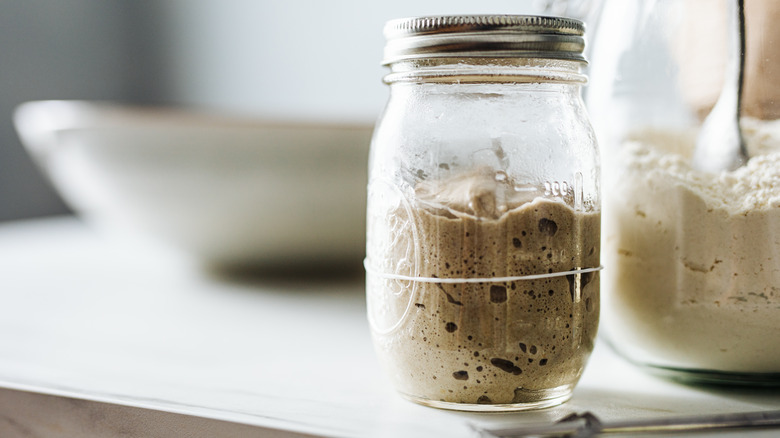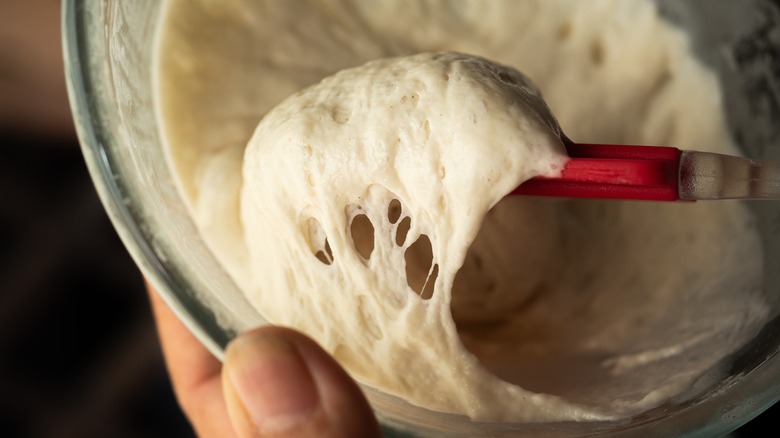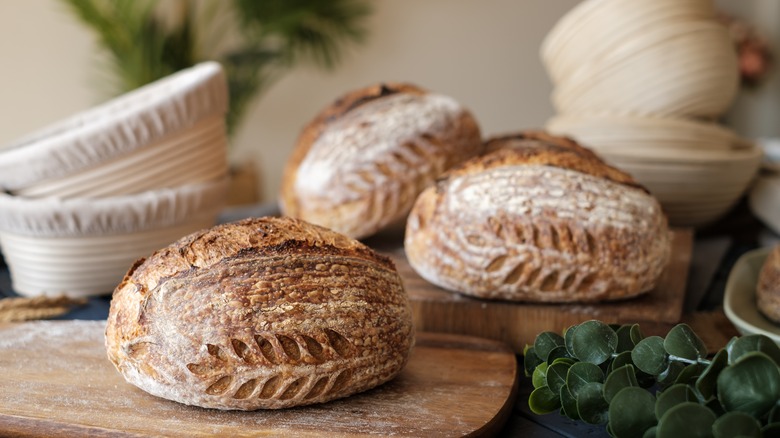Sourdough 101: What's The Difference Between A Starter And A Levain?
If you're anything like the thousands of people who took up baking during the pandemic, you're probably familiar with sourdough starters — you may even have one yourself or decided it wasn't worth the trouble. They're not for the forgetful or lazy; sourdough starters are much like pets or children in that they need feeding and care to thrive. In recipes or on baking blogs, you might see the term sourdough starter or starter freely exchanged with the term levain and wonder what the difference is, if any.
This mixing of terms can get confusing for novice sourdough bakers but don't worry about getting a recipe wrong that calls for levain and you have "starter." That's because, fundamentally, levain and starter are the same. They're both preferments, meaning they're both made from mixtures of flour and water that have been left to ferment and take on the good yeasts and bacteria floating in the air before being baked into bread or waffles. This fermentation is what gives sourdough its distinctive tang.
Starter is what you maintain so you can bake bread anytime
The only difference between a starter and a levain is function. They're both used to leaven bread but in slightly different ways. When you have a starter, you maintain it with regular feedings of flour and water, discarding a portion of it every time. (If you find it wasteful to throw it away, there's plenty you can do with sourdough starter discard.) As the mixture ferments, it gains leavening properties from the wild yeasts in the air, and the sour aromas and flavors are a product of the fermentation process. The time it takes for a starter to be active enough to support a loaf of bread differs depending on temperature, type of flour, and water, but it should take about a week to 10 days. When it's mature, you need to keep maintaining it so a portion of it is ready to be used at any time.
When it's time to bake a loaf of bread, you take a portion of your starter to mix into your no-knead sourdough bread to act as the leavener — this is often called the levain in recipes, but you'll also see it referred to as "active" or "mature" starter. It will get mixed into the flour, water, and salt and impart both rise and flavor to whatever you're making. The starter you didn't take you'll keep feeding to maintain its activity for your next loaf of bread or batch of waffles.
Levain is useful for next-day baking and building flavor
On the other hand, if you don't have a mature sourdough starter and you want to bake bread or croissants tomorrow, you can make an immature starter, also called a levain (but also sometimes called poolish, as if this whole endeavor couldn't get more confusing). It's a mixture of flour and water, with a helpful boost from commercially available yeast — a scant amount, but it's enough to get things moving. After mixing, you leave it out on the counter overnight, and in the morning it'll be bubbly and loose but smell very bready. This will get mixed into more flour, water, and yeast, with salt for flavor.
A levain starter for your bread is less flavorful than a full-on sourdough starter because it just hasn't had the time to ferment and develop those flavors. However, it will do the job nicely, leavening your bread, making it easier to knead, and imparting some of those sour flavors we associate with a full sourdough loaf.


